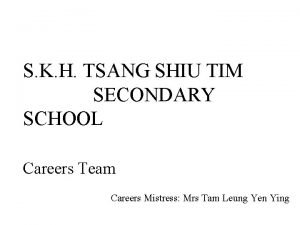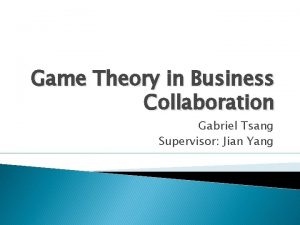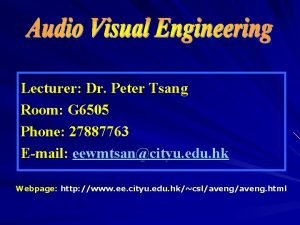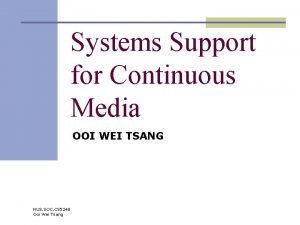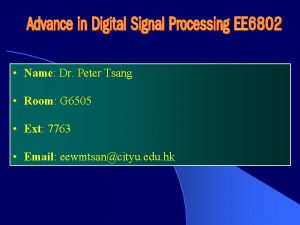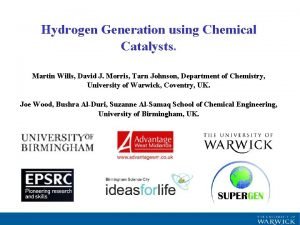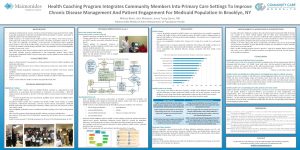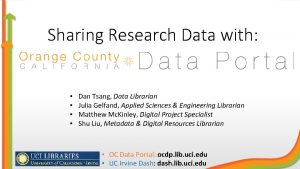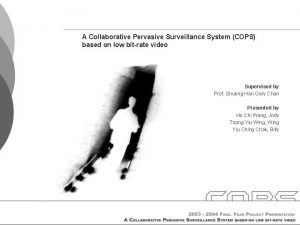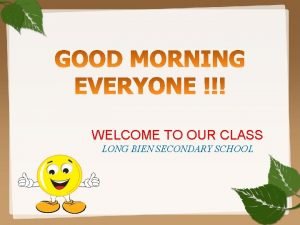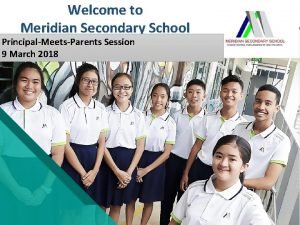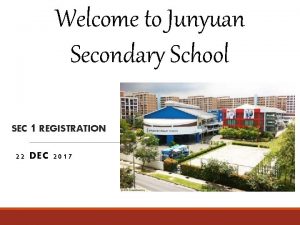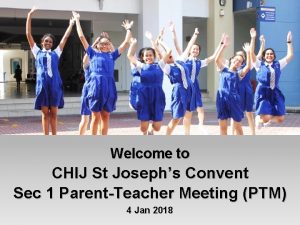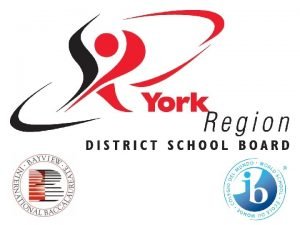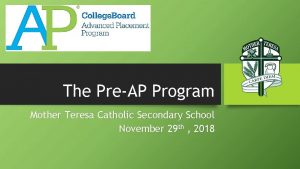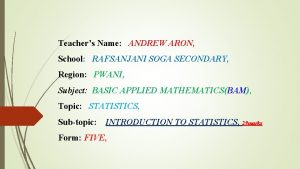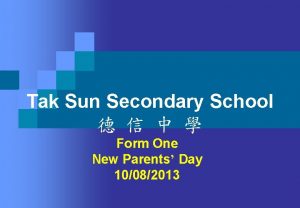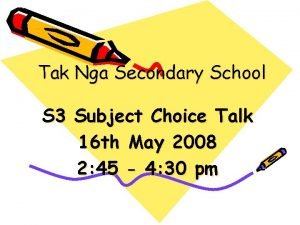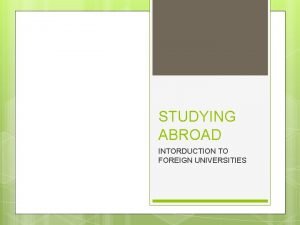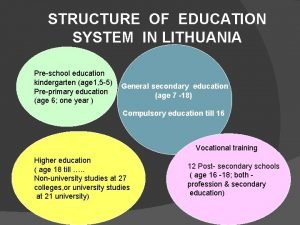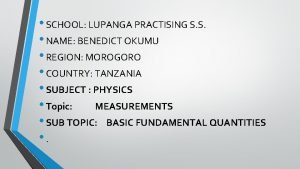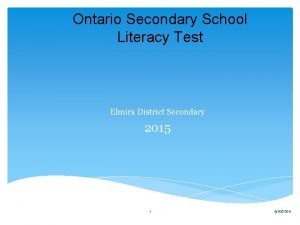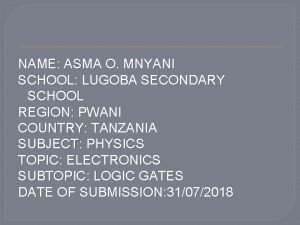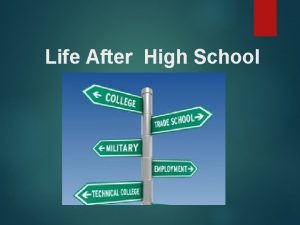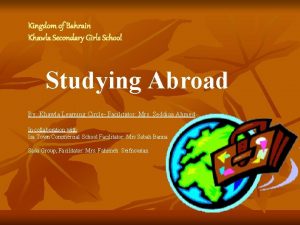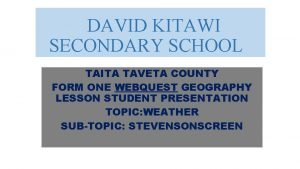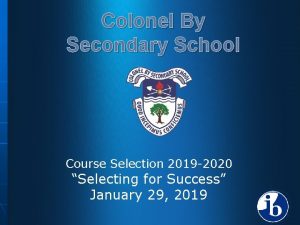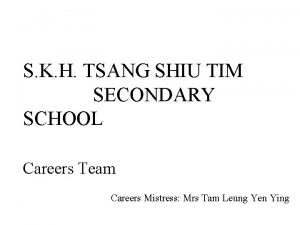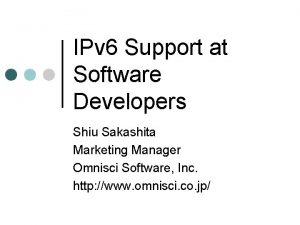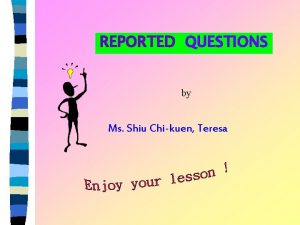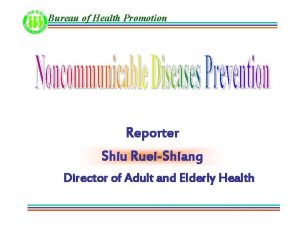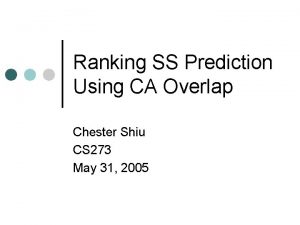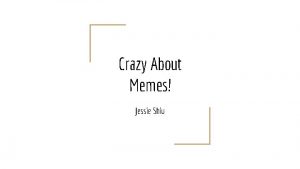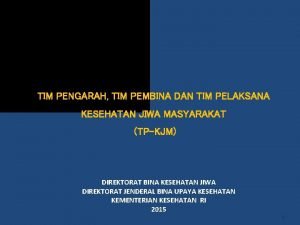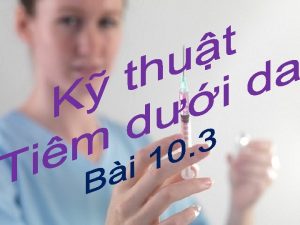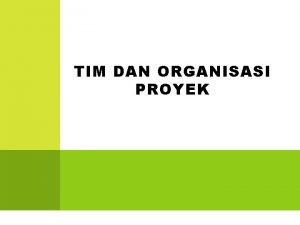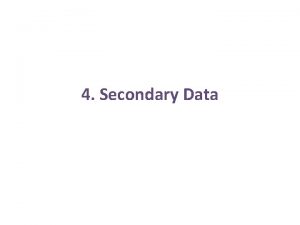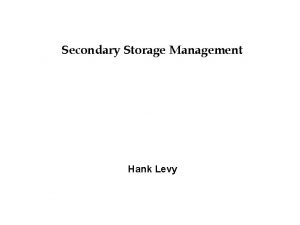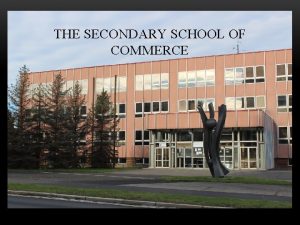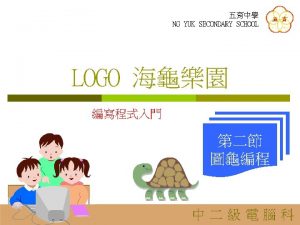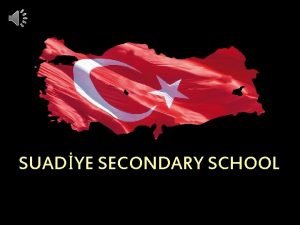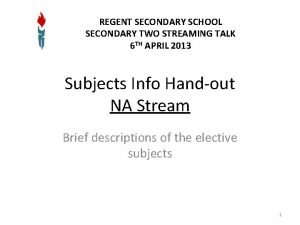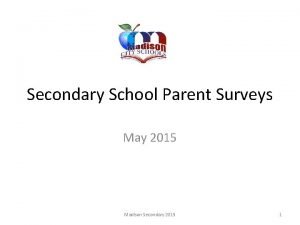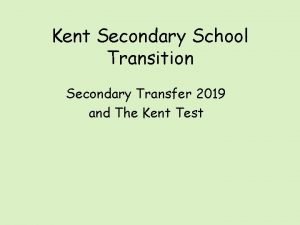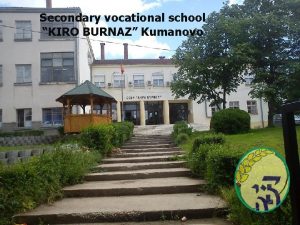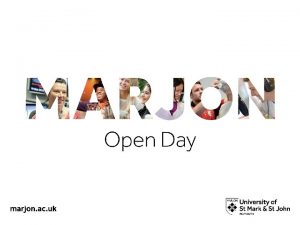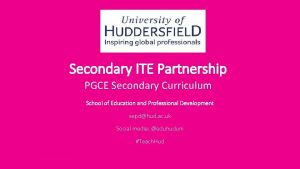S K H TSANG SHIU TIM SECONDARY SCHOOL








![Methods in Careers Education Activity – Visit (cultural exchange programmes[Peace Boat] school-business partnership programmes) Methods in Careers Education Activity – Visit (cultural exchange programmes[Peace Boat] school-business partnership programmes)](https://slidetodoc.com/presentation_image_h/13529d3fc12e94f2fea99947776ff2fc/image-9.jpg)





















- Slides: 30

S. K. H. TSANG SHIU TIM SECONDARY SCHOOL Careers Team Careers Mistress: Mrs Tam Leung Yen Ying

Our Mission All-round development of our students, providing them colourful learning experiences to ensure growth in morality, wisdom, sportsmanship, social maturity, aesthetics and spirituality.

Our history (30 th Anniversary) • Students’ background: low to average income. most live in public housing • Teachers’ background: 80% teachers teaching for over 10 years. ( Turnover rate: 0. 2% /year)

S. K. H. Tsang Shiu Tim Secondary School Management Structure (2007 -2008) School Council Principal Vice Principal (Studies) Academic Affairs Committee NSS Working Party NSS OLE (4 teachers) sports, ECA, CRE, MCE School Improvement Team School Plans Committee Life Education Committee 7 teachers Crisis Management Team Further Education & Careers Counseling Committee Parent Teacher Association Staff Development Committee Alumni Association Vice Principal (Administration) Information Technology Committee 3 teachers General Administrative Affairs Committee Student Counseling Committee Discipline Committee Religion Affairs & Ceremonies Committee Extracurricular Activities Committee CYC 2 teachers

Aims of Careers Education (5 Es) 1. Effecting matching between students and careers. - students achieving self understanding, strengths and aptitudes. - students informed of the working world. 2. Enabling: linking studies (KLA) with work demands. - students working harder on related work skills e. g. languages, maths, etc. 5 Es=Empowerment

Aims of Careers Education (5 Es) 3. Extending: increasing exposure and active experimentation. - students applying KLA knowledge in ECA activities and acquiring generic skills. 4. Enriching: deepening experience and sharing with others. - students reflecting on experiences and inspiring others with aspirations. 5. Equipping for life: viewing work in the widening contexts: students valuing work ethics, contributing to society, country and world. 5 Es=Empowerment

Methods in Careers Education Session – talks, dissemination of information via the intranet, campus noticeboards and publications. (careers library) [Careers Day, Alumni Sharing]

Methods in Careers Education Project – Curriculum – related (Language-Careers Projects) (small-scale, across forms, peer teaching) [Careers Oscars, English SBA] – Multi-intelligence / Enterprising Projects (large-scale, alumni-initiated, across forms) [The Apprentice]
![Methods in Careers Education Activity Visit cultural exchange programmesPeace Boat schoolbusiness partnership programmes Methods in Careers Education Activity – Visit (cultural exchange programmes[Peace Boat] school-business partnership programmes)](https://slidetodoc.com/presentation_image_h/13529d3fc12e94f2fea99947776ff2fc/image-9.jpg)
Methods in Careers Education Activity – Visit (cultural exchange programmes[Peace Boat] school-business partnership programmes) [Aircraft Carrier] – Camps (conflict management) [International School Camp] – Intensive courses ( topping-up, remedial) – Mock Interviews (alumni-and-teachers hosted) [Mentorship Scheme]

Methods in Careers Education Events – Stakeholders (Parents Day, PTA functions, PTA publications, Careers Day) – District/country/regional/world functions (Open Days, Expos, competitions, summer courses) – Real work experience (Volunteer teaching, serving in hospital, community service) [Financial Quiz]

Expected Outcomes (For Students) 1. Effected: Students’ ownership in career planning. (Vital in NSS) Enabled: – self-initiated search – self-assessed progress 2. Extended: Gradual initiation into critical thinking and decision making. 3. Enriched: Students’ interest and passion in aspirations through happy experiences. 4. Equipped: Attitudes and value formation in work. 5. Empowered: Sharing with peers, alumni

Expected Outcomes (For School) Students (bonding among themselves) 1. Partnerships (Teacher’s space) Tripartite relationship (alumni > outside volunteers) alumni school 2. Partners with KLA (across curriculum), OLE (MCE, CS) Partners with other organizations (PTA, AA) Partners with global organizations (Peace Boat, LPC) 3. Programme development (constant reflections) – sustainability (building a tradition e. g. alumni participation) 4. Teachers’ development (Careers teachers’ knowledge and skills)

Expected Outcomes ( School Self Assessment) How Careers Teachers evaluate programmes and plan for the future: - Assessment Methods: A. Quantitative 1. After each programme, computer scored reflections. 2. Comparison across years (e. g. number of participants). 3. Co-relation with KLA areas. 4. Transparent: results on Careers website.

Expected Outcomes ( School Self Assessment) B. Qualitative 5. Open-ended reflective comments for self and school on computer-score sheets. 6. Long reflective journals. 7. Teachers’ monitoring through casual chats with stakeholders. (students, alumni, parents, teachers, partners and school authority)

Expected Outcomes ( School Self Assessment) C. Relation to KLA/OLE 8. Evaluate emphasis on particular areas based on students’ strength and weakness and the school’s policies. D. Experimentation 9. Trying new methods and ready for changes.

Misconceptions (Myths) Myth: 1. Careers Education is vocational education. So, higher ability students do not need it. Answer: All (the all-rounders and the weak) need it. Myth: 2. Academic results dictate the students’ choices. So, higher ability students study first and decide on careers upon graduation. Answer: Early preparation and strategic planning makes a difference in achievement and choices. Myth: 3. A lot of money needed for Careers programmes. Answer: Partnerships and alumni contribution saves money.

SKH Tsang Shiu Tim Secondary School (2007 -8) Tentative Time Allocation for OLE (for internal planning use) Time tabling: 6 days/cycle, 40 mins/period, 25 cycles OLE Components Provision for all students in School Time allocation (in hour) Total time/year (hour) PE 2 periods 33 45 Sports Day (2 days) 12 AE 2 periods 33 33 MCE Assembly (2 periods) & Class teacher period (1 period) 50 75 CRE Career education through talks > 15 CS Exposure in CS (Service ambassador, other school service groups) 3 times a year 10 Total time allocation for each year 153 hours (exceed 135 per year)

SKH Tsang Shiu Tim Secondary School (2008 -9) Tentative Time Allocation for OLE (for internal planning use) Time tabling: 6 days/cycle, 40 mins/period, 25 cycles OLE Components Provision for all students in School Time allocation (in hour) Total time/year (hour) PE 2 periods 33 45 Sports Day (2 days) 12 One Students One Sport (F 1) >10 2 periods 33 One Student One Art (F 2) English -- Film Appreciation (F 4 -5) Drama Workshop (F 2) >10 MCE Assembly (2 periods) & Class teacher period (1 period) 50 CRE Career education through talks > 15 CS Exposure in CS (Service ambassador, other school service groups) 3 times a year 10 AE Total time allocation for each year 43 75 163 hours (exceed 135 per year)

SKH Tsang Shiu Tim Secondary School Partnership Global Organisations Local Organisations Alumni Parents School Students Subjects & OLE areas World

Thank You The End

Careers Day

Alumni Sharing

Careers Oscars

The Apprentice Stall Apprentice Services Apprentice Camp Apprentice Sharing Apprentice Camp Description Billboard Apprentice Camp Final Score Back to slide 8

Peace Boat

Aircraft Carrier

LPC United World College Camp

Mentorship Scheme (Sept 2002 – Oct 2003) Making both teachers and students more reflective Careers Day Mentorship Scheme (First formal 2 -hour meeting) • Self-assessment of 50 mentees on their own generic skills • Feedback from 40 mentors on mentees’ generic skills

Financial quizzes

Li Po Chun United World College English Camp Students’Reflections (mostly unedited) One of the winning reflective journals: • From 4 B(19) Cheung Ming Chui • ‘Fun’ and ‘meaningful’. These are the words I would like to describe the camp—namely English Conflict Management Day Camp—we approximately 40 TST students joined on 1 st February. Back to P. 14
 Skh tsang shiu tim secondary school
Skh tsang shiu tim secondary school Gabriel tsang
Gabriel tsang Dr peter tsang
Dr peter tsang Ooi wei tsang
Ooi wei tsang Dr peter tsang
Dr peter tsang Martin wills warwick
Martin wills warwick Jenny tsang-quinn
Jenny tsang-quinn Sharing
Sharing Jody tsang
Jody tsang Welcome to secondary school
Welcome to secondary school Meridian secondary school
Meridian secondary school Meridian secondary school principal
Meridian secondary school principal Junyuan secondary school uniform
Junyuan secondary school uniform Sjc secondary school
Sjc secondary school Bayview ib program
Bayview ib program Mother teresa catholic school
Mother teresa catholic school Lusanga secondary school
Lusanga secondary school Rafsanjani soga secondary school
Rafsanjani soga secondary school Tak sun menu
Tak sun menu Tak nga secondary school
Tak nga secondary school Secondary school grading system
Secondary school grading system Grading system in lithuania
Grading system in lithuania Nyandoche ibere
Nyandoche ibere Mzumbe secondary school
Mzumbe secondary school Lupanga practising secondary school
Lupanga practising secondary school Elmira district secondary school
Elmira district secondary school Lugoba high school
Lugoba high school Post secondary school
Post secondary school مدرسة خولة
مدرسة خولة David kitawi secondary school
David kitawi secondary school Steve spidell
Steve spidell
